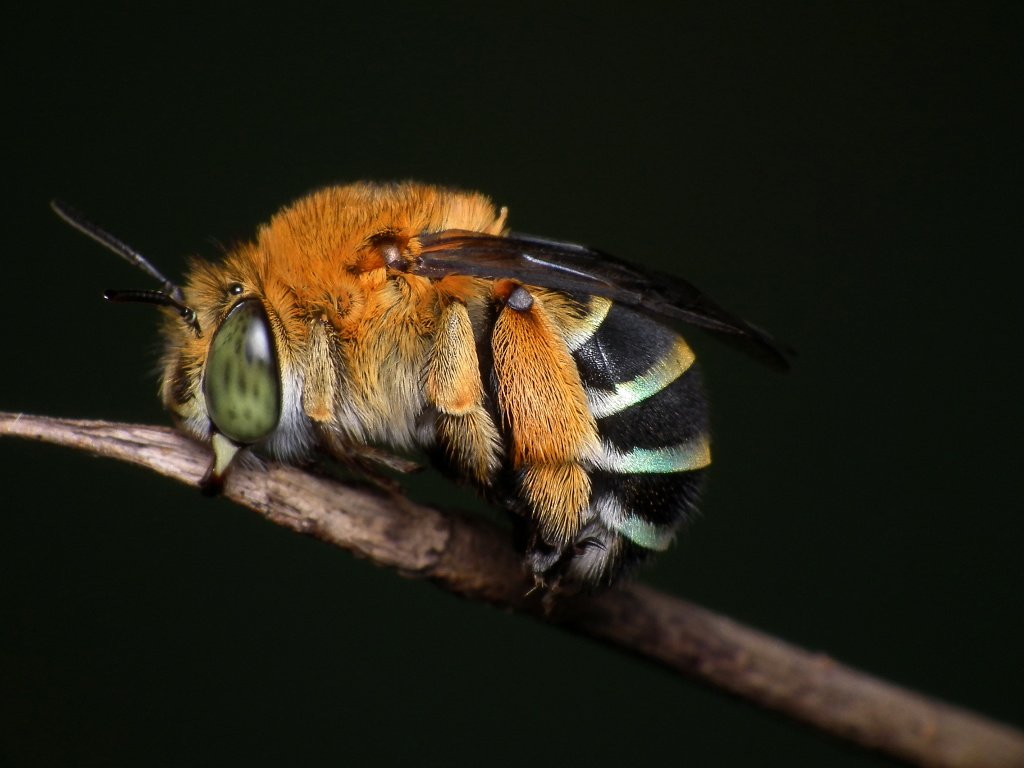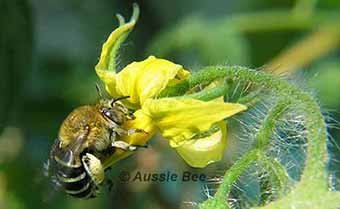Blue Banded Bees - Bring them on!
If you look closely around your garden in the warmer months, you may see a striking little insect zipping around some of the flowers. Blue banded bees are one of the many species of native Australian bees that can be found in backyards all over Australia (except Tasmania, sorry!). If you’ve seen them for yourself, you’ll know how striking their colouring is, which also makes them easier to spot. Many people who have seen these beauties want to attract more to their garden and there are a few simple ways to do this.
The easiest way is to plant flowers that they will enjoy and come back for over and over again. Heading into the tail end of Summer, now is an excellent time to put some plants into your garden that will establish over Winter, ready to feed these beautiful native bees in the Spring and Summer months later in the year.
Blue banded bees are solitary bees, meaning rather than living in a hive they build individual nests. These particular bees nest in burrows in clay soil, mudbrick and even the mortar between bricks in houses. They are buzz pollinators which means they vibrate their flight muscles to shake the pollen free from a flower. While this is helpful to many native species, there is evidence to show that tomatoes are pollinated better when visited by a buzz pollinator, so attracting these little guys may even improve your tomato yield! They may also be beneficial to eggplants, chillies and capsicums.
If you’d like to make your garden a little more attractive for these beautiful (and useful) bees, consider planting these in your garden:
Blue and purple plants in general: While blue banded bees do not exclusively visit these flowers (I’ve seen plenty on my white butterfly bush), they do seem to heavily favour them and having more in those colours will certainly make your garden more attractive.
Lavender: is said to be a heavy favourite of blue banded bees. I’ve had particular success with the variety ‘grosso’ which is also heat, drought and frost tolerant, as well as great for drying!
Pretty much all salvias: in dark pink, purple and blue varieties seem to be enjoyed by blue banded bees. Salvias are incredibly versatile plants and come in a variety of heights and styles with the added bonus that many are also drought and heat tolerant.
Sea lavender (Limonium): another gorgeous, hardy perennial that these bees love. The blue banded been in my garden have chosen to nest right behind these plants! The sea lavender flowers can also be easily dried and used for displays, keeping their bright colour for months.
Coastal rosemary: is one of the native plants favoured by these bees and can make a great, low-maintenance addition to your garden.
Basil plants: both perennial and annual can be attractive to blue banded bees, despite their lack of colourful flowers. They are also useful in the kitchen!
The male blue banded bees roost alone or in small groups by holding onto a thin stem with their jaws. Providing plants with these kinds of thin stems will also help to make your garden a pleasing habitat. It can be harder to pinpoint what exactly makes a plant a good roost, and what is appealing to one may not be to others but I’ve had some blue banded bees roost on the Mexican sage by my front door and the long stems of butterfly bushes.
So keep an eye out in your garden the next time you’re out watering or enjoying a quiet moment. You might just see one of these little native bees popping in for a visit (and maybe helping to pollinate your veggies while they’re there!).
If you’re interested in learning more about blue banded bees or other native bees, check out the website links below.
https://www.aussiebee.com.au/blue-banded-bee-information.html
The Aussie Bee Guide to Blue Banded Bees by Dr Anne Dollin (article 27)




